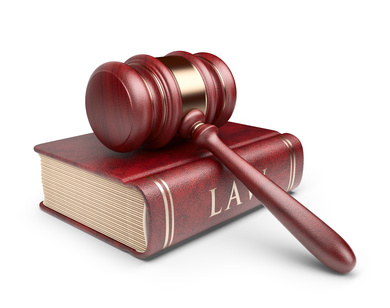The Good Samaritan Law protects individuals who assist those who are injured, ill, or in peril. As long as someone is acting voluntary and without expectation of reimbursement or compensation while performing such aid on-site, they will have legal protection. When performing CPR, every second counts, so unless unique circumstances apply, don’t hesitate to call 911 and perform CPR immediately.
Before attempting CPR on someone in need of assistance
There are several things you must do. Make sure you and the patient aren’t in any danger. If possible, resolve the risk or move the patient out of harm’s way. If unable to do so for whatever reason, immediately call 911.
Check the patient to determine if they are conscious or not. Do not check for a pulse because time is of the essence and finding a pulse can take too long. Call out to the patient asking, “Are you okay?” Repeat if necessary. If the patient doesn't respond, immediately call 911 and then perform CPR—initiating Circulation, Airway and Breathing tasks (the C-A-B’s). Also, if possible, have someone nearby call 911 and begin CPR, immediately.
It's important to note: American Heart Association (AHA) guidelines recommend in-confident performers should, at least, perform chest compressions upon the patient. Studies show chest compressions can be as effective as the combination of CPR.
Understanding Duty to Act
Duty to act is the duty requiring a person to take necessary action in order to prevent harm to another person or to the general public. Whether you are required to follow through depends on the situation and the relationship between the parties. In some cases, breach of duty may put a party at liability for damages.
For laypersons, duty to act requires that you provide care if you have a legal duty. If you do not have a legal duty to provide care, you are not required to provide it.
Fear of providing care
There are a number of factors to weigh up when considering providing care. COVID-19 is an important concern, but the risk of contracting diseases can be reduced by wearing personal protective devices like masks, gloves, and gowns that limit exposure.
If you feel fear of providing care due to possible legal issues, know that rescuers who provide care without a legal duty and act in good faith are protected by Good Samaritan laws.
If the situation is actively unsafe, do not attempt care. If you or the victim are at risk, it is best to call EMS and wait for support to arrive.
In some cases, you may be unable to save a victim. Rescuers should still attempt to provide the best care they are able to. A victim’s chances of survival can be improved by even basic efforts at life support. In accidents, victims who are clinically dead may still be helped when given care. Rescue efforts will not worsen their condition.
Following a traumatic situation in which you provided care, you may experience overwhelming emotions. If you continue to feel symptoms like depression, be sure to seek help from a professional source.
Healthcare providers are the profession at the highest risk for contracting COVID-19. Many work in close contact with patients suspected or confirmed to have the disease. To improve their safety and limit their exposure, updates have been made to existing CPR recommendations. These include limiting personnel attending to a patient, encouraging bystander CPR, and emphasizing providing at least hands-only CPR.
First responders are advised to put on PPE before entering the scene. CPR should consist of cycles of thirty compressions and two rescue breaths. When giving rescue breaths, a bag-mask that has a tight seal and filter should be used. Alternatively, continuous chest compressions with passive oxygenation can be provided whilst wearing a protective medical mask. Mechanical CPR devices can be used for patients who meet the height and weight requirements to reduce aerosolization risk.
For adult victims, it is recommended to provide at least hands-only CPR after a cardiac arrest is known to have occurred. The healthcare provider and/or victim should wear a face mask to reduce the risk of contagion for the safety of both, as well as any none-household bystanders.
For children, chest compressions should be performed and mouth-to-mouth ventilation may be considered. Again, mask-wearing is advised for both the healthcare provider and/or victim.
What is Personal Protective Equipment?
PPE (Personal Protective Equipment) keeps you safe from blood, hazardous materials, and OPIM. PPE includes:
- Face shields
- CPR shields
- Gloves
- Goggles
- Gowns
- Masks
All Personal Protective Equipment promotes safety by creating a barrier between you and the infection/hazardous materials. Before arriving at the scene of the accident, you must assess the situation to determine the risks and to use the proper PPE.
PPE examples include CPR shields provide protection against exposure when performing CPR. Face shields provide splash and high impact protection, while gloves protect against exposure from skin contact with chemicals, infectious agents, cold, heat, and cutting objects. For proper protection, be sure to use the correct hand.
Goggles are designed to reduce the risk of exposure to laser radiation, chemical splashes, or flying debris. Gowns are used to prevent the penetration of infectious blood, hazardous materials, or other OPIM. Masks are used to protect the employee from airborne materials or liquid contaminating the face.




